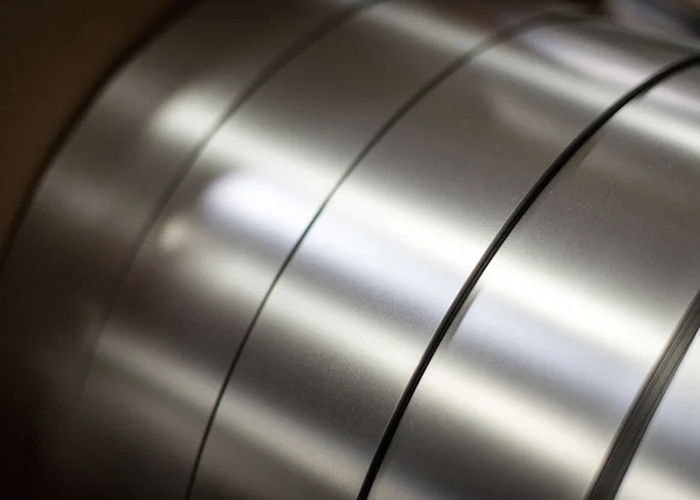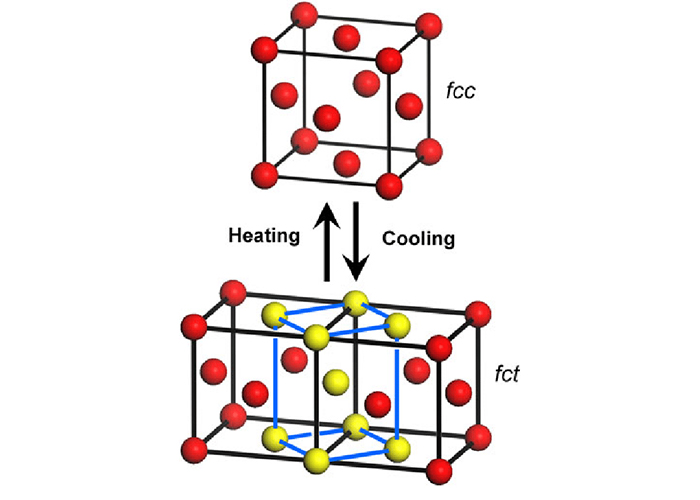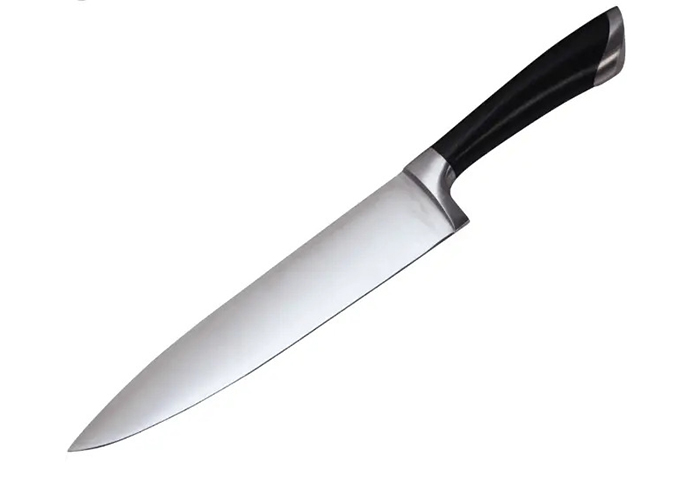Stainless steel, a common name across industries and households, is an alloy of iron, carbon, and other elements, with a minimum of 10.5% chromium content by mass. The high chromium content enables stainless steel to form a passive oxide layer on its surface, known as a ‘chromium oxide’ or ‘passive layer.’ This layer is what makes stainless steel ‘stainless’ by protecting it from corrosion and rusting, even in harsh environments. This corrosion and heat resistance properties along with its robust strength make stainless steel amenable to several uses and an indispensable component across a wide variety of industries.
|
Table of Content
|
While stainless steel is available in five different types that are used for different purposes, one of the most important and common ones is known as martensitic stainless steel. In this blog, we shall delve into the details of martensitic steel only, unveiling the secrets of its strength and versatility of applications.
What is the Composition of Martensitic Stainless Steel?

Martensitic stainless steel is a type of stainless steel that is characterized by its unique microstructure – the martensite structure. Martensitic stainless steel composition typically includes:
- Chromium (11.5-18%), and
- Carbon (up to 1.2%)
Martensitic stainless steel may contain other alloying elements as well, such as nickel, molybdenum, and manganese. These elements contribute to specific properties such as increased corrosion resistance, improved toughness, and better heat resistance.
What is meant by ‘Martensite Structure’?

The martensite structure forms during a specific heat treatment process known as ‘quenching.’ When another type of stainless steel known as austenitic stainless steel is rapidly cooled, the crystal lattice undergoes a transformation, resulting in the formation of martensite stainless steel. This transformation is diffusionless, meaning that it happens without the migration of atoms but involves a rearrangement of the existing atoms within the lattice.
The secret to the strength of martensitic stainless steel lies in the quenching process. As the steel is rapidly cooled, the carbon atoms become trapped in the crystal lattice, distorting its structure. This distortion creates internal stresses, making the material exceptionally hard and strong. The steel then retains this hardened state, contributing to its intense strength and durability and allowing it to withstand heavy loads and resist any kind of deformation.
The Properties of Martensitic Steel
The most important and noteworthy Martensitic stainless steel properties are as follows:
-
Adjustable Strength and Hardness
One of the intriguing features of martensitic steel is that its strength and hardness can be adjusted through the quenching process. By carefully controlling the cooling rate, engineers can tailor the material to meet specific requirements for various applications. This versatility allows this kind of stainless steel to be used in diverse industries, from cutlery and surgical instruments to turbine blades and structural components.
-
Magnetic Properties
Unlike austenitic stainless steel, martensitic stainless steel is ferromagnetic, meaning it can be easily magnetised. This ferromagnetic property opens up new possibilities in applications where such properties are advantageous, for example, in electromagnetic devices and magnetic sensors.
-
Tempering for Toughness
While martensitic stainless steel is known for its hardness, it can sometimes become brittle. While this can be a potential issue during its application, there are ways to solve this problem. To address this, a process called ‘tempering’ is employed, which involves reheating the quenched steel to a specific temperature range. Tempering imparts toughness to the material without compromising its malleability significantly. This balance of hardness and malleability makes martensitic stainless steel an ideal choice for applications where both properties are crucial.
Read more: MS Channels: Ultimate Guide to Strength and Versatility
The Most Common Types of Martensitic Stainless Steel
Martensitic stainless steel is available in different types, each tailored to suit different applications and requirements for use in different industries. Some of the most common types of martensitic steel are—
- 410 Stainless Steel: This is one of the most common grades of martensitic steel and is often used in general-purpose applications. It offers good corrosion resistance, high strength, and moderate heat resistance.
- 420 Stainless Steel: Known for its exceptional hardness and wear resistance, 420-grade of martensitic stainless steel is commonly used for cutlery, surgical instruments, and specialized tools.
- 440 Stainless Steel: With higher carbon content, 440-grade martensitic stainless steel exhibits even greater hardness and abrasion resistance, making it suitable for high-performance cutting tools and bearings.
How is Martensitic Stainless Steel Different from Other Types of Stainless Steel?
Some of the ways martensitic stainless steel differs from other types and grades of stainless steel are as follows:
- Microstructure: The primary difference between martensitic stainless steel and other stainless steel types lies in their microstructure. Martensitic stainless steel has a unique martensite microstructure, formed through the rapid quenching process, which imparts exceptional strength and hardness.
- Magnetic Properties: Unlike austenitic stainless steel, martensitic stainless steel is ferromagnetic, meaning it can be magnetised. This magnetic property sets it apart from the other non-magnetic grades of stainless steel.
- Strength and Hardness: The high carbon content and the quenching process in the formation of martensitic stainless steel make it stronger than other types of stainless steel such as ferritic stainless steel.
- Corrosion Resistance: Compared to austenitic and ferritic stainless steel, martensitic stainless steel offers lower corrosion resistance.
Applications of Martensitic Stainless Steel

Martensitic stainless steel applications are wide and varied and find use across an extensive range of industries, owing to its impressive mechanical properties and versatility. Some such notable applications include:
- Cutting Tools and Knives: The high hardness and wear resistance of martensitic stainless steel make it ideal for manufacturing cutting tools, blades, and knives that retain sharpness for extended periods.
- Bearings and Gears: Martensitic stainless steel is suitable for bearing and gear applications, ensuring smooth and reliable mechanical operations.
- Medical Instruments: Surgical instruments, dental tools, and medical equipment benefit from the strength, corrosion resistance, and easy sterilisation of martensitic stainless steel.
- Aerospace Components: Martensitic stainless steel is used in aerospace applications, such as aircraft components and turbine blades, where its combination of strength, heat resistance, and magnetic properties proves invaluable.
- Automotive Parts: Automotive components, such as crankshafts and transmission parts, require materials that can handle high stress and resist wear, making martensitic stainless steel a preferred and often an irreplaceable choice.
Martensitic Stainless Steel – The Other Name for Strength and Durability
Martensitic stainless steel is thus a marvel in the world of raw materials, with its martensite structure containing secrets of unparalleled strength, hardness, and versatility. Whether it’s cutting-edge technology or traditional craftsmanship, martensitic stainless steel stands the test of time, proving to be a reliable and essential raw material in numerous applications.
Buy Superior-quality Martensitic Stainless Steel in India from Sree Metaliks Limited
As an industry leader, Sree Metaliks Limited continues to push the boundaries of innovation, offering tailored solutions to your requirements with the highest-quality martensitic stainless steel. Sree Metaliks Limited has been dedicated to providing high-quality martensitic stainless steel and other different kinds of stainless steel that exceed expectations and have set new standards in the steel industry in India. Hence, if you are looking for premium stainless steel materials in the country, you have to look no further than Sree Metaliks Limited.
Explore the limitless possibilities of martensitic stainless steel and other different kinds of stainless steel with Sree Metaliks Limited. Visit the website or contact customer service today to discuss your specific requirements and discover how their expertise can elevate your projects to new heights. Let strength and versatility redefine your steel solutions.
For more information, please reach out to us at: Sales@sreemetaliks.com

